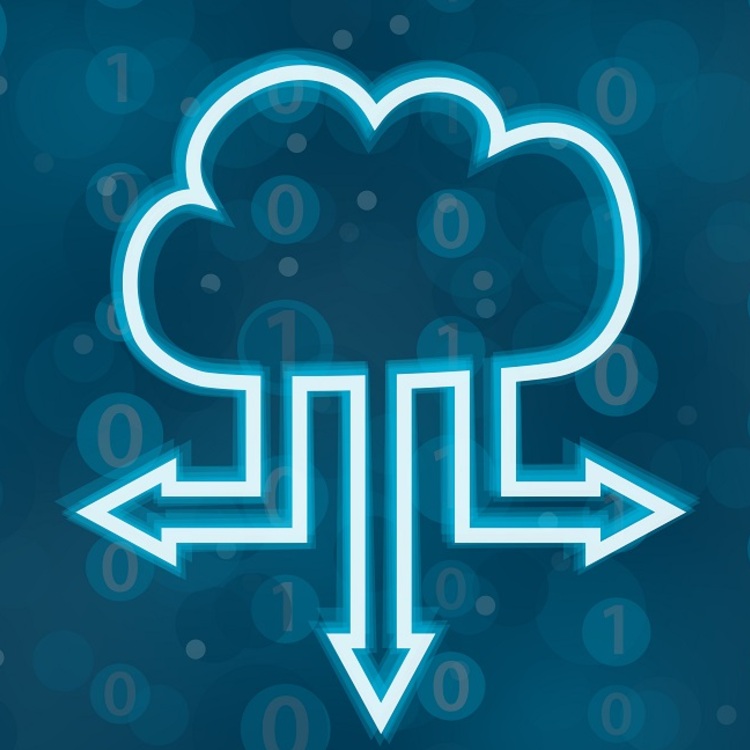After three decades working inside software giant Microsoft, Brett Tanzer has no doubt that change is constant and the pace of technology innovation is relentlessly accelerating. Enterprises that once licensed software printed on floppy disks and CD ROMs now stream business-critical applications over the internet. They also have more choices than ever, as innovations in public cloud services and private cloud technologies become available more rapidly, driving IT leaders to build hybrid cloud operations that fit their particular business needs.
Tanzer, vice president of product management at Microsoft, has been an IT professional at Microsoft for over 30 years. He leads product management across Azure services that are focused on cloud infrastructure, security and productivity to help accelerate the customers on their journey to the cloud for mission critical workloads. Azure offers cloud computing products and services ranging from virtual machines, virtual desktops, SQL databases and Kubernetes to name just a few. As of January 2023, the Azure Marketplace lists over 18,000 products and services, most of which are IT and management tools from its partners.
Customer needs drive product innovation, said Tanzer. Whenever customers face challenges, collaborating to find a fix can lead to ideas for improving existing products or even creating new ones.
“We meet customers where they are in their cloud journey by building relationships and understanding their priorities,” he said in an interview with The Forecast.
He sees customers grappling with new challenges as they build out their hybrid cloud IT operations. To enable customer’s desire to choose technologies they want to use, Tanzer collaborates with other software companies, including Nutanix, to continue expanding options for customers to upgrade their on-prem infrastructures. In 2022, the two companies announced Nutanix Cloud Clusters (NC2) on Azure, which provides unified management across hybrid clouds with applications, data and license portability.
“Organizations are embracing hybrid cloud strategies to easily scale from on-prem to the public cloud, optimize costs for performant and secure workloads, and tap into a flexible subscription model,” said Rajiv Ramaswami, President and CEO of Nutanix in a press release.
“NC2 on Azure gives our customers a frictionless on-ramp to Azure with consistent management of apps and data across their hybrid cloud environment.”
Tanzer said that focusing on customer needs and building partnerships is critical to the continued evolution of the Azure cloud computing platform.
Partnerships That Speed Innovation and Benefit Customers
With NC2, Nutanix customers are able to access the broader suite of Azure products and services, allowing them to tap into capabilities such as high-performance computing and AI.
“This is part of a strategy that Nutanix and Microsoft really share, which is meeting the customers where they are — helping them address the biggest problems they have today, like TCO, security, reliability and global reach,” Tanzer said.
Tanzer noted that many companies running Nutanix on-premises would like to move apps to Azure, but that would require completely rewriting the apps from scratch. Nutanix’s NC2 makes it easy to shift those apps to Azure rather than rewrite them.
NC2 on Azure also benefits software architects and developers, Tanzer added.
“It makes it easy for them to access technologies to go build more efficient applications and continue to do that in the cloud,” he said.
Three Decades in Enterprise Software: Moving Big Workloads to the Cloud
Tanzer’s tenure at Microsoft dates to the 1990s, which gives him a unique perspective on meeting enterprise IT needs.
“I came here with the goal of helping people use databases on Windows back in the day,” he recalled. “And I stayed 30 years.”
Throughout his career, he has worked on mission-critical applications and core infrastructure that helped Microsoft become a mainstay of enterprise IT.
Tanzer noted that big companies perpetually balance a raft of challenges, from regulation to workforce training. They’re always looking for ways to reduce (or at least control) the total cost of ownership (TCO) of their technology investments.
Azure helps enterprises meet these challenges, according to Tanzer.
“We're seeing customers come from all industries, across all walks of life,” he said.
Azure’s enterprise customers share a common interest in tapping the cloud’s innate scale and flexibility. Developers can easily spin up cloud environments, which lets businesses pivot quickly in response to changing customer sentiment. Azure’s tools for big data and artificial intelligence give clients next-generation computing power.
Microsoft’s enterprise customers often want to shift some of their “crown jewel” workloads to the cloud, Tanzer said. And a growing number of businesses want to maintain a hybrid cloud approach, giving them the flexibility to run workloads in Azure or in their private data center.
“What we're hearing continuously is that they do really want the benefits and flexibility that comes from moving these solutions to the cloud,” Tanzer said.
One key challenge is getting the total cost of ownership (TCO) right.
Using Hybrid Cloud to Improve TCO
The classic pitch for cloud services is that companies can hand off data center operations to data center experts. Instead of buying and supporting hardware, companies subscribe to infrastructure services. A hybrid cloud operation provides a variety of ways to scale up and down resources as needed and offers options for cost optimization.
The appeal of running a hybrid cloud IT operation includes the ability to have owned and operated data centers as well as services from a cloud computing provider. IT leaders can also choose when it’s best to spend their budget on operating expenses (OpEX) or capital expenses (CapEx). This is driving many to evaluate strategies to optimize the total cost of ownership (TCO) while meeting present and future business needs.
“The infrastructure that Azure provides really makes it possible for customers to reach new levels of TCO using their Nutanix solutions,” Tanzer said.
Companies turn to Nutanix to simplify and scale their owned data centers. By using the Nutanix Cloud Platform powered by hyperconverged infrastructure (HCI), which uses software to virtualize compute, networking and storage on commodity hardware, customers can make their data centers more efficient, requiring less physical space and reducing electricity consumption. They can also use NC2 to run replicas of their private data centers in a public cloud, removing the time and cost-intensive work required to migrate from private to public cloud services.
“The real value is you get to take your existing solutions that have been highly tuned and optimized, and bring them to the cloud for further optimization, better TCO, and more expanded reach, and then you get to count on the Nutanix roadmap,” Tanzer added.
Innovating for the Future
Tanzer said the next step for this partnership is to help enterprises adopt and mature their hybrid cloud operations, especially as they explore new innovations such as artificial intelligence, machine learning and automation.
“Microsoft takes its role as a steward of future technology very seriously,” he said.
He points to the company cafeteria at the world headquarters in Redmond, Washington. Lettuce grows there hydroponically, generating data the company can apply, for instance, to help agricultural enterprises become more efficient.
“We have enabled access to an incredible amount of data and processing power that these organizations may not have had,” he said.
Solutions like Azure and Nutanix NC2 help companies break down barriers and drive innovation.
“What we do with it as a society, though, is still to be determined, but we certainly have a lot more enablement and power to go solve those problems today than we did when I started my job 30 years ago,” he said.
“It's really an exciting time. It's 30 years and I am still interested in what comes from the next 20.”
Tom Mangan is a contributing writer. He is a veteran B2B technology writer and editor, specializing in cloud computing and digital transformation. Contact him on his website or LinkedIn.
© 2023 Nutanix, Inc. All rights reserved. For additional legal information, please go here.






